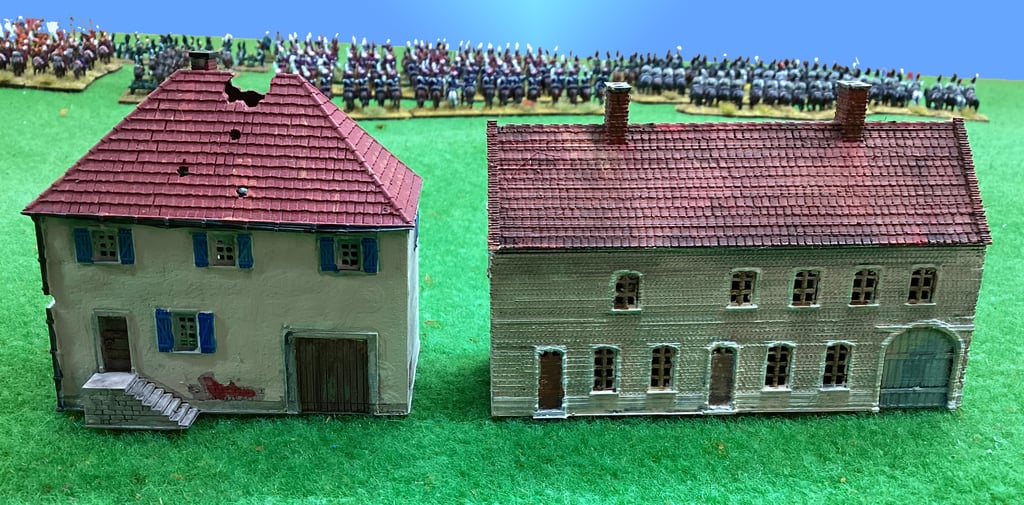Gadzooks! My roof is leaking lieutenant
In our little world of tabletop wargaming, every miniature conflict is a carefully orchestrated dance of strategy, tactics, and engaging storytelling. While the main focus often falls on the intricately painted miniatures that populate the battlefield, the stage upon which these epic clashes unfold is equally crucial. In this article, I venture into the world of 3D war-games buildings – structures that can mere scenery to become integral components of the gaming experience.
Richard Bird
2/23/2024
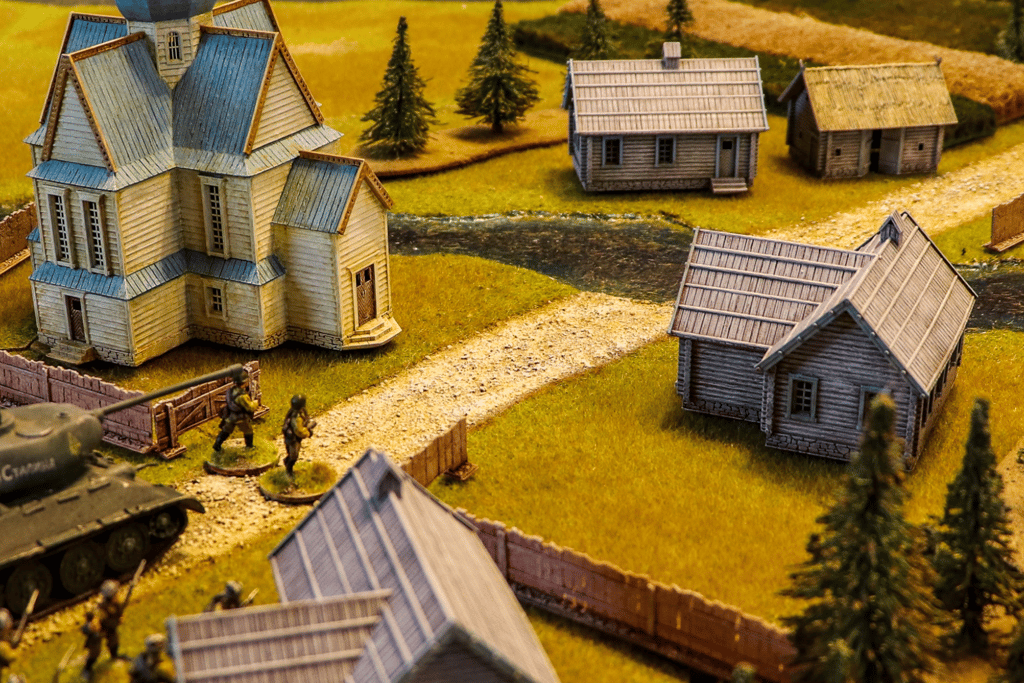

When I created my first wargame armies, it was the 1/72 plastic figures from Airfix purchased from a model shop over ten miles away. I would collect my pocket money, pedal off on my bike at weekends and holidays, and return to paint my new army as fast as possible to get them on the table, covered in a green cloth my mother had dyed for me. I would purchase a few plastic buildings that would fit in with my chosen gaming period, and I was happy. Over time, I gathered a collection of resin-cast structures, some good, some not so good.
I particularly like Total Battle Miniatures, which I find very well made and come in two flavours: firstly, Skirmish Scale, where the models are scaled to popular wargame sizes, i.e., 3mm, 6mm, 10mm, 15mm, and 28mm; and secondly, Big Battalion Scale, where they are scaled enough to a shrunken footprint so as not to overpower your table. I do now need to move on to the subject of 3D-printed buildings.In recent times, the realm of tabletop wargaming has undergone a notable transformation, propelled by advancements in 3D printing technology. Enthusiasts now enjoy access to a plethora of intricately crafted and customisable 3D-printed models, injecting renewed vitality into their gaming experiences. In this post, we'll delve into the universe of 3D-printed wargame structures.


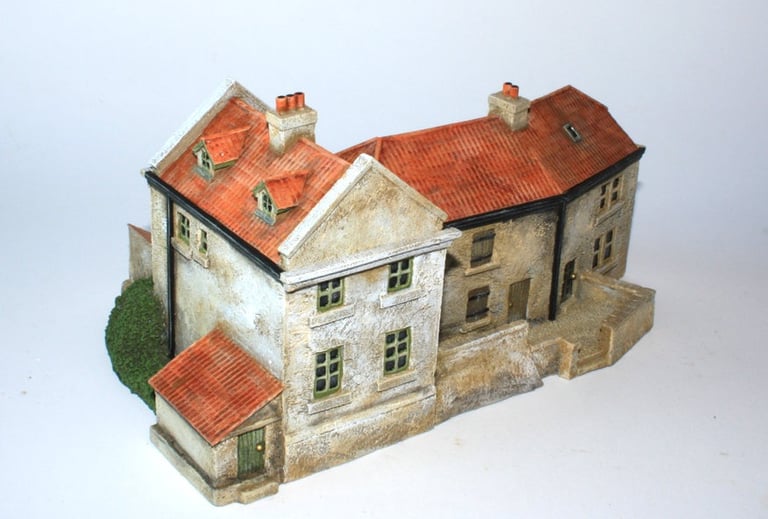

Russian infantry with tank support enter a Russian village. Buildings by Battle Honours 3D
Terraced Housing with Backyard, lift-off roofs and floors from Total Battle Miniatures
Enclosed Farm Buildings with Yard, lift off roofs and floor from Total Battle Miniatures. A resin building I have owned which looks really stunning on table. Total Battle Miniatures
DIY 3D Printing
Delving into the realm of printing your own 3D wargame models from suppliers of STL files brings forth certain challenges that warrant a discerning approach. A key concern revolves around the reliability of STL files provided by various suppliers. Standards can vary significantly, leading to potential issues such as imprecise detailing, structural flaws, or incomplete models. The inconsistency in file quality may compromise the intended gaming experience, leaving users with models that fall short of expectations. Another challenge lies in the intricacies of the printing process itself. Despite the increased accessibility of 3D printing technology, achieving successful prints of complex wargame models demands a certain level of expertise. Novice users may encounter difficulties in calibrating printers, ensuring optimal layer adhesion, and managing supports effectively. Navigating these challenges can be time-consuming and may result in frustration, requiring a careful balance of skill and patience.
Furthermore, it is crucial to consider the financial aspect of utilising quality 3D printing materials. While opting for more affordable filaments may seem like a cost-effective choice initially, it comes with potential drawbacks. Inferior materials can yield models that are fragile, prone to breakage, and lack the necessary durability for prolonged use. Given the substantial investments in time, money, and effort associated with 3D printing, users should exercise vigilance in selecting reputable suppliers and meticulously examining files to mitigate these potential pitfalls.
Although printing of 3D figures isn’t the subject of this post, do your due diligence before buying a printer. For decent quality wargames sized figures your printer should ideally be using resin and FDM is fine for bigger items I’m told. Being a wary old fella, I’d want some proof that they will print properly on my particular machine.For me, I will now only buy from suppliers that have the experience and know how. DIY 3D printing isn’t for me but if you are willing to gain the knowledge it can be fun, and you can also earn yourself a little extra as a side hustle.

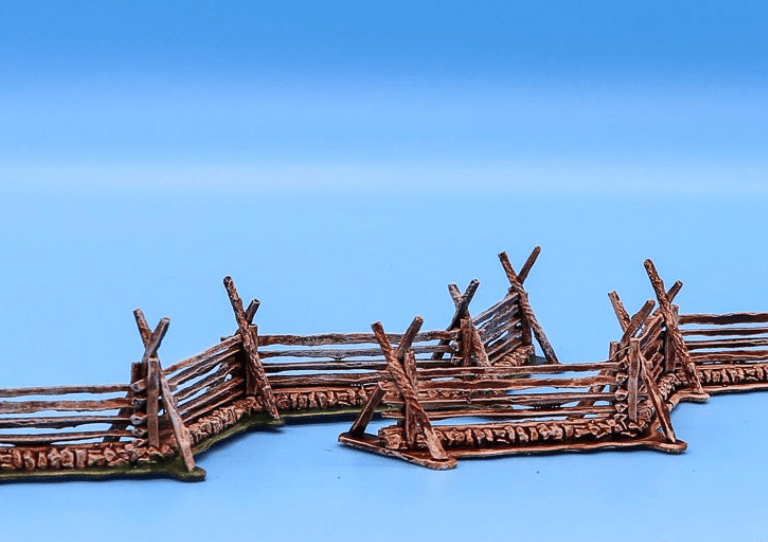
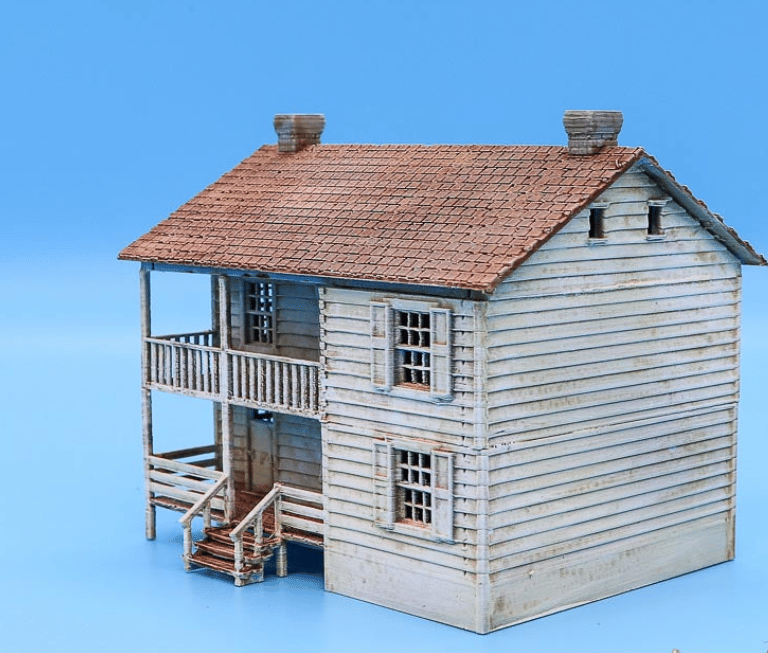
The above gallery are some fine examples of ACW buildings from Battle Honours 3D. I love the fences which give an authentic look to AWI and ACW games. Not a bad price either.
However...Once one has mastered your 3D printer, producing your own 3D wargame buildings from purchased STL files provides gamers with some true benefits. One significant perk is the ability to customise the scale. Another is the ability to print numerous buildings at your leisure, an economic appeal that cannot be overstated, as self-printing eliminates the need for costly pre-made models. Providing you have the time and inclination, buying a commercial license from your STL supplier will enable you to make a little money on the side by selling your prints on such platforms as Etsy or eBay. Just a brief search on these platforms will unearth a number of regular offerings, often at competitive prices. I have found that several of these budding businesses are very helpful when it comes to scaling to a particular size.
Taking it a step further
Battle Honours 3D has recently etched out a distinctive niche in the historical wargaming world with its premium 3D-printed models. The company offers a diverse array of wargame structures spanning different historical eras and environments. The sheer number of ready-printed buildings, and now the terrain features that they offer, gives us wargamers a real choice that is currently incomparable. A standout feature of Battle Honors 3D is its emphasis on customisation. The company allows customers to tailor their models according to specific scale preferences, ensuring seamless integration into individual tabletop scenarios. This dedication to personalisation is a key element that sets Battle Honours 3D apart in the market.I would love to expound on the delights of many of the 3D-printed fantasy buildings, but I must try to keep myself within the bounds of historical gaming. Having said that, many of these buildings would look like a treat on a medieval game table, so they are seriously worth looking at. One site I enjoy visiting is Printable Scenery, They have an extensive range of fantasy STL files but also have a good variety of historical buildings.
Sites to check out
Battle Honours 3D
Wargame Vault
Wargaming 3D
Printable Scenery
Forged TerrainEtsy
eBay
ConclusionThe world of 3D-printed miniature wargame structures is large and continually evolving, so I’ll be updating this article over time as I discover new products. Whether storming Normandy's beaches or navigating a Napoleonic citadel, the realm of 3D-printed miniature wargame structures offers boundless potential for realism and engaging gameplay.Please drop me an email to let me know of your favourite 3D-printed terrain sites and products or if you have any comments. After all, the blog is a living thing. It’ll be good to hear from you.
On the left of the above picture is a 10mm European building from Battle Honours 3D and on the right another from a small business seller on eBay. Something to bear in mind in the final result is that one might be left with print line (striations I call them). At a distance I don’t notice them but close up or in larger sizes they may well offend the eye. I have learnt not to go by the enticing images of STL files and look instead at images of the printed product.
